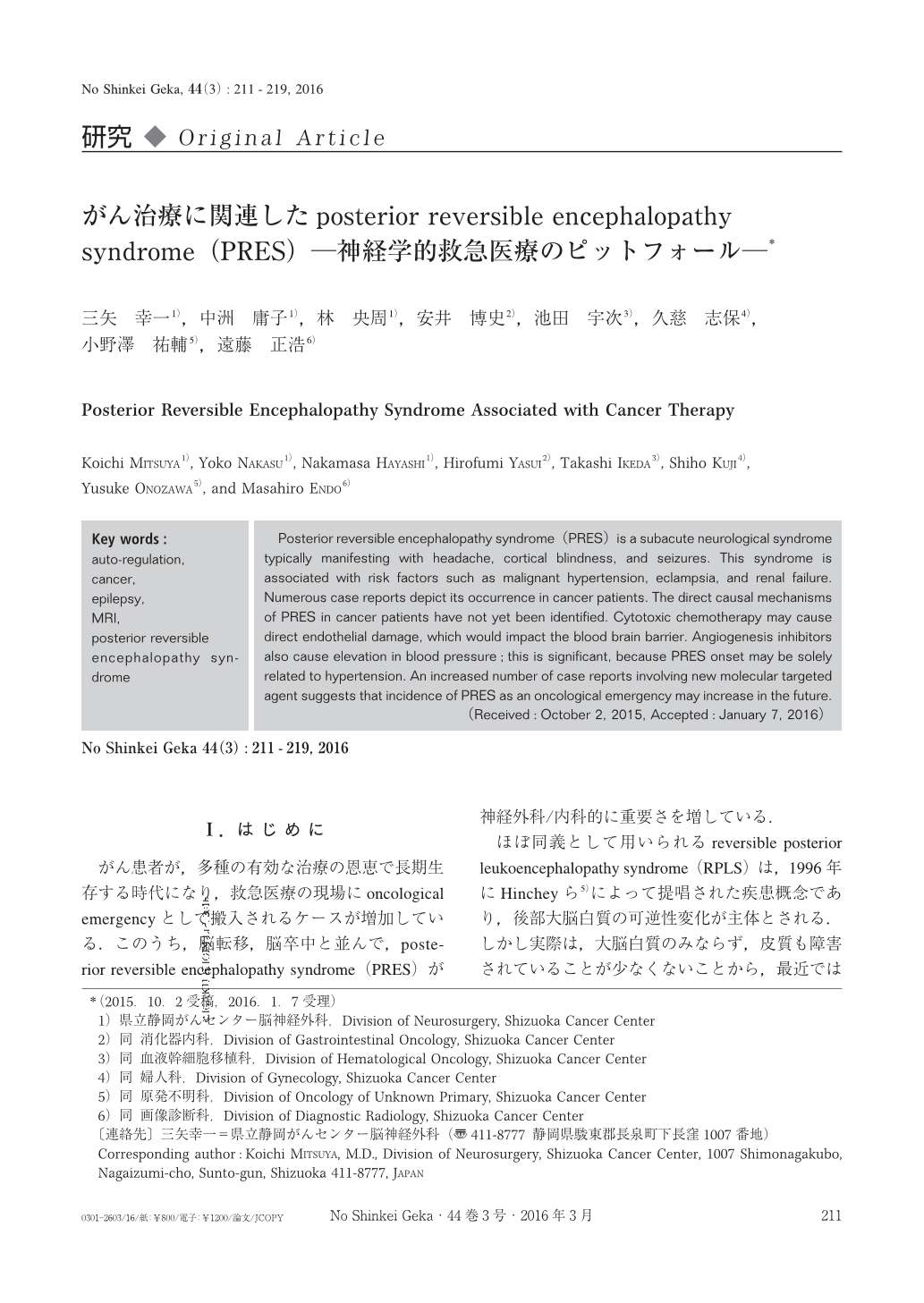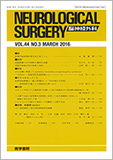Japanese
English
- 有料閲覧
- Abstract 文献概要
- 1ページ目 Look Inside
- 参考文献 Reference
Ⅰ.はじめに
がん患者が,多種の有効な治療の恩恵で長期生存する時代になり,救急医療の現場にoncological emergencyとして搬入されるケースが増加している.このうち,脳転移,脳卒中と並んで,posterior reversible encephalopathy syndrome(PRES)が神経外科/内科的に重要さを増している.
ほぼ同義として用いられるreversible posterior leukoencephalopathy syndrome(RPLS)は,1996年にHincheyら5)によって提唱された疾患概念であり,後部大脳白質の可逆性変化が主体とされる.しかし実際は,大脳白質のみならず,皮質も障害されていることが少なくないことから,最近では皮質と白質の両方を含む“encephalopathy”を用いたposterior reversible encephalopathy syndrome(PRES)が用いられることが多い1).頭痛,痙攣,視覚異常,意識障害を臨床的主症状とし,画像上,脳浮腫と思われるFLAIR高信号病変が認められ,しかも,原因の是正により,臨床的・画像的異常が可逆的に消失するという病態である.
抗がん剤に関連するPRESは今までも報告があったが,血管新生阻害薬(bevacizumab, sunitinibなど)の出現から,最近報告が増加してきており,一般の脳神経外科医,神経内科医が,診療する機会が増加してきている7,10,19).
この病態は,時代のトピックスとして,2つの重要な課題を抱えている.
それは,①診断,治療選択や経過について,まだ一般的な知識となっていないこと,②その発症因子・リスクは,がん治療の革新とともに変化していることである.
今回われわれは,当院で最近診療したがん治療に関連した5例のPRESについて診断と治療経過を提示し,発症要因,鑑別診断,治療の課題について考察を加える.
Posterior reversible encephalopathy syndrome(PRES)is a subacute neurological syndrome typically manifesting with headache, cortical blindness, and seizures. This syndrome is associated with risk factors such as malignant hypertension, eclampsia, and renal failure. Numerous case reports depict its occurrence in cancer patients. The direct causal mechanisms of PRES in cancer patients have not yet been identified. Cytotoxic chemotherapy may cause direct endothelial damage, which would impact the blood brain barrier. Angiogenesis inhibitors also cause elevation in blood pressure;this is significant, because PRES onset may be solely related to hypertension. An increased number of case reports involving new molecular targeted agent suggests that incidence of PRES as an oncological emergency may increase in the future.

Copyright © 2016, Igaku-Shoin Ltd. All rights reserved.


